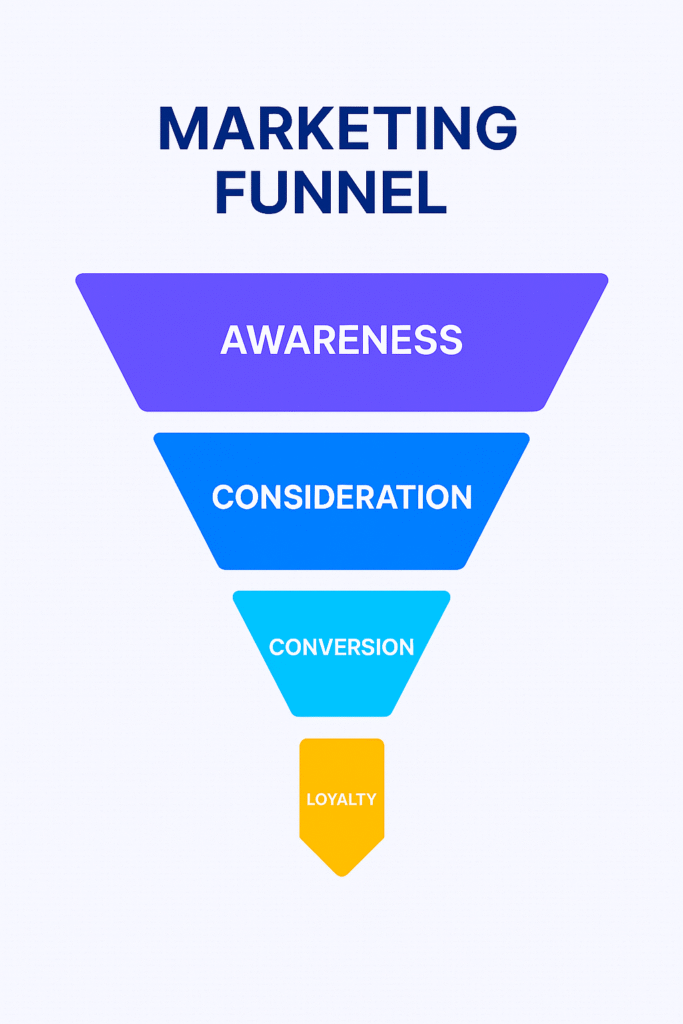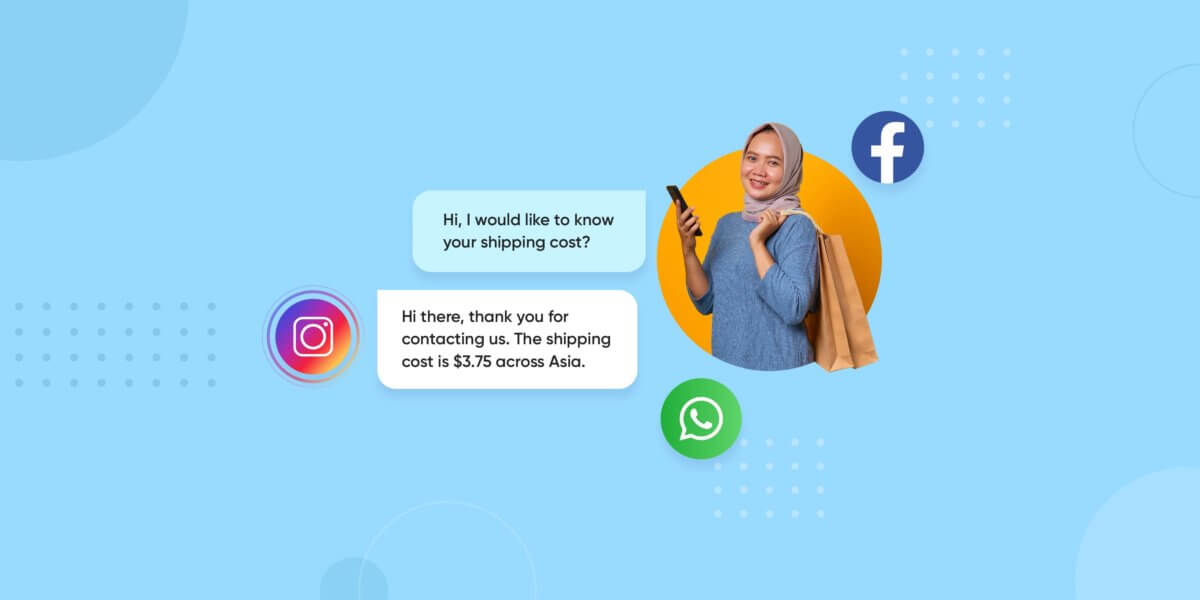Elevate Your Marketing Strategy with Generative AI
- September 3rd, 2025 / 5 Mins read
-
 Aarti Nair
Aarti Nair

Elevate Your Marketing Strategy with Generative AI
- September 3rd, 2025 / 5 Mins read
-
 Aarti Nair
Aarti Nair
Improving Marketing with Generative AI Tools
One of the most promising and transformative developments in recent years is Generative AI, which is poised to revolutionise the field of marketing.
This groundbreaking technology has garnered significant attention from experts across various industries, thanks to OpenAI’s ChatGPT, which made its debut in November 2022.
ChatGPT, powered by large language models (LLMs), has demonstrated its remarkable ability to automate a wide range of tasks, including
a) content creation,
b) market research,
c) sales and marketing planning,
d) SEO optimisation,
e) market segmentation
and much more!
This technological marvel is not confined to the realm of IT or relegated to back-end processes but is making its mark across the entire professional landscape, with marketing being a notable beneficiary.
ChatGPT’s capabilities extend far beyond simple automation; it embodies a new era of creative and strategic thinking in marketing.
Here are some statistics to back up these claims!
Recent findings from Salesforce’s survey on Generative AI usage in marketing across the US, UK, Australia, and India reveal intriguing trends:
In India, 73% of respondents have already embraced Generative AI, utilising it for education, sales, marketing, and performance enhancement.
Australia follows closely, with 49% of surveyed businesses integrating Generative AI into their marketing strategies.
In the US, 45% of respondents have ventured into the realm of Generative AI in marketing.
The UK, with 29% adoption, is also witnessing a growing interest in this transformative technology.
With a solid foundation of data in hand, it’s clear that you may have a multitude of questions. So, let’s dive in and explore a few essential metrics related to Generative AI and how it impacts the field of marketing!
Suggested Reading: The Support Genius: Generative AI Tools Redefine Customer Assistance
What is Generative AI?
You open a brief, the cursor blinks, and the clock ticks. What if the first draft didn’t need you to coax it out? Generative AI is the bit that does exactly that: models trained on large datasets that learn patterns in language, images, and audio, then produce new content by predicting what should come next in a sequence. In plain terms, it can write a headline, expand a paragraph, tidy a script, or sketch ten on-brand variants in seconds. Useful? Only if it sounds like you. That’s where context comes in.
Give it your brand voice notes, approved claims, product facts, and a clear prompt, and it reflects your style rather than spraying generic fluff. Ask it for “three playful-but-professional subject lines for our Diwali offer, UK spelling, soft CTA,” and it will oblige. Feed it a dense blog and request a crisp LinkedIn post, and it will trim the fat. Need comparison copy that avoids risky claims? Set the guardrails, and it will keep to them. You’re still the editor, but the blank page becomes optional.
Does it replace judgment? No. Think of it as a very fast junior with an excellent memory. You decide what is true, what is compliant, and what will resonate with your audience. It handles the first pass, the variations, and the busywork that slows teams down. What could that free up for you this week—better research, sharper offers, or simply shipping on time without the Sunday scramble?
Why now? Timing, trends, and the “good enough to be useful” moment
Twelve months ago, Generative AI looked like a neat demo. Today it sits inside your docs, design tools and ad managers, quietly taking the sting out of first drafts. Quality has crossed a line: give it brand voice notes and approved claims, and it gets you from blank page to workable copy fast. If the heavy lifting happens in minutes, what could your team do with the time you get back?
Cost helps too. Variants are cheap, which means you can try more angles without turning every experiment into a project. Speed helps even more. Outputs now flow straight into your CMS, CRM or campaign setup, so there’s less copy-paste chaos and fewer chances to lose the thread. And control has finally caught up: templates, approval gates and audit trails keep tone steady and claims tidy, so you move faster without crossing lines.
What does that look like in real life?
A paid team spinning up several headline options before lunch, a product marketer shaping a landing section that already sounds like you, a rep finishing a call as the follow-up is drafted in the CRM. Small wins, stacked, start to feel like momentum.
So the question is no longer “Is the tech ready?” It’s sharper: if the tech is ready, are your workflows ready—and where in the funnel will you put it to work first?
How Effective is Generative AI in Marketing?
As we have learned already, Generative AI in marketing has emerged as a Bibliophile-approved tool in the marketing context. Let’s understand its significant and transformative role in marketing.
1. Enhanced Creativity
Generative AI’s ability to analyse audience patterns, preferences, and trends goes beyond just data analysis. It empowers marketers to generate creative and engaging content ideas autonomously. This includes crafting compelling slogans, narratives, and unique perspectives with minimal human intervention. As a result, marketing campaigns become more captivating and resonate more deeply with the target audience.
2. Marketing Segmentation
Leveraging the capabilities of large language models, Generative AI plays a pivotal role in uncovering new customer segments. By delving into factors such as purchase history and online behaviour, it helps marketers identify emerging customer groups. Armed with this information, marketers can tailor their strategies and communications to specifically address these segments, ultimately optimising their marketing efforts for maximum impact.
3. Personalised Marketing
Generative AI revolutionises personalised marketing. By analysing vast amounts of customer data and preferences, it enables marketers to deliver highly personalised content. This encompasses tailored messages, product recommendations, and personalised offers, all of which lead to heightened customer engagement and increased conversion rates. Customers feel more valued when content speaks directly to their needs and desires.
4. Content Automation
With its proficiency in processing vast datasets, Generative AI provides marketers with invaluable insights and predictions related to customer behaviour, market trends, and content performance. Armed with these insights, marketers can fine-tune their strategies, pinpoint specific target segments, and make data-backed decisions. This ensures that marketing efforts are aligned with the most up-to-date and relevant information.
5. Data-Driven Insights
By processing vast datasets, Generative AI offers valuable insights and predictions about customer behaviour, market trends, and content performance. Marketers can harness these insights to optimise strategies, target specific segments, and make data-backed decisions.
6. Improved Efficiency
Generative AI significantly accelerates the content creation process. This becomes especially advantageous in fast-paced marketing environments where quick turnaround is essential. Marketers can produce a higher volume of content in less time, ensuring they stay ahead in the ever-evolving landscape of digital marketing.
7. A/B Testing and Optimisation
Generative AI lends itself to A/B testing and optimisation efforts. By generating multiple versions of content for analysis, it empowers marketers to conduct more comprehensive experiments. Marketers can then refine their strategies based on these insights, continually improving their impact. This iterative approach ensures that marketing campaigns evolve and adapt to changing audience preferences and market dynamics.
Where Generative AI Fits in Your Funnel?
If you’re like most marketers, you’re spending more time shepherding assets than moving prospects. Generative AI changes that. It plugs into the places that slow you down—ideation, drafting, personalisation, and follow-ups—so the work moves faster and stays on brand.
1. Top of funnel — spark the scroll-stop.
Need fresh angles without the late-night panic? Generative AI turns briefs into hooks, headlines and ad variants in minutes—so you can test five ideas before the kettle boils. Ask for three tones (witty, warm, straight-talking), keep UK spelling, and let the data pick the winner. Research round-ups, social posts, thought-starter carousels—done faster, still in your voice. Ready to turn attention into intent?
2. Middle of funnel — from brochureware to “talk to me now.”
Here’s where the rubber meets the revenue. Static websites don’t persuade; conversations do. Swap the one-size-fits-all page for a dynamic site with a website chatbot that qualifies, guides and converts—think of it as CRO with a smile. Visitor hovers on pricing? The bot offers a 60-second walkthrough. Returning prospect on the comparison page? It surfaces the right proof point and books a callback. Exit-intent? A short quiz funnels them to the exact plan (and captures consent while you’re at it). You still own the message; AI simply keeps the dialogue moving—contextual, on-brand, and measurably faster to “yes.” Shall we nudge them one step further?
3. Bottom of funnel — objections answered, decisions made.
This is the moment for precision. Feed your approved claims, case snippets and pricing rules into the model and it generates tailored responses, proposal paragraphs and FAQ blocks that stay compliant. Sales gets draft follow-ups in the CRM before they say “cheers,” while voice scripts keep the tone professional + empathetic on every call. The result? Fewer stalls, tidier hand-offs, cleaner close notes. What would one less round of email ping-pong do to your win rate?
4. Post-purchase & loyalty — keep the conversation (and lifetime value) alive.
Retention isn’t a monthly newsletter; it’s timely, helpful nudges in the channels customers actually open. WhatsApp chatbot campaigns routinely see ~98% open rates—far higher than email—making them ideal for order updates, replenishment reminders, how-to tips and review requests. Pair that with smart service flows (instant answers, human handoff when needed), and your brand starts to feel reliably helpful, not relentlessly noisy. Happy customers talk; loyal customers buy again. Which do you want more of this quarter?
Five punchy use cases of Gen AI in Marketing
You don’t need more channels; you need more momentum. Generative AI pairs beautifully with chat and voice agents to remove friction, keep tone consistent, and move buyers along—without adding late nights to your calendar. Where does it land first?
1) Idea Bakery — turn brief crumbs into campaign loaves
Got two lines and a deadline? Generative AI spins up hooks, headlines and CTAs in minutes, while your AI chat agent quietly A/B tests the winners on-site. A new visitor hovers on pricing? The bot serves the value prop variant that’s outperforming this week—same brand voice, less guesswork.
2) Audience Whisperer — speak to segments like you actually know them
Give the model your segments and pains, and it shapes copy that meets each group where they are. Your website chatbot recognises intent (new vs returning, evaluator vs buyer) and steers the conversation accordingly—“Want the 60-second overview or the detailed spec?” Fewer detours, more momentum.
3) SEO without the slog — useful content, minus the yawns
AI drafts FAQs, snippets and briefs so humans can focus on substance. The same knowledge fuels your AI chat agent to answer long-tail questions on the page, keep readers engaged, and nudge them to the next step. It’s content and conversation working together, not in silos.
4) Creative Chameleon — on-brand everywhere, not copy-and-paste
One message, many surfaces: email blocks, LinkedIn posts, product microcopy—and a 20-second opener for your voice agent that sounds professional and empathetic. The site chatbot adapts tone and examples by region or referrer without drifting off-brand. Consistency becomes a feature, not a chore.
5) Personalisation that doesn’t feel creepy — timely nudges, right channel
Blend simple rules with AI to be helpful, not heavy-handed. WhatsApp chatbot campaigns land where people actually read—~98% open rates versus email—so replenishments, order updates and review prompts get seen. Meanwhile, your website chatbot catches exit-intent with a quick quiz and recommends the right plan. Power with permission: honour opt-ins, log consents, and keep claims clean.
AI does the first pass and the legwork; your agents—chat and voice—carry the conversation. You keep the judgment and the brand.
Brand voice: consistency without sounding robotic
If your logo vanished from the page, would people still recognise you? That’s the test. Generative AI can turn a blank screen into a first draft in seconds—but without a clear voice, it risks sounding like everyone else. The goal isn’t sameness; it’s recognisably you across channels, days, and teams.
Start with a simple question: what does “us” sound like on a Monday morning? Friendly-but-professional? Punchy with short sentences? Warm, with the occasional wink? Capture that once, and you can scale it everywhere—without slipping into monotone.
Build a living “voice card” (kept short, used daily)
-
Tone spectrum: where you sit between formal ↔ conversational, playful ↔ serious.
-
Sentence rhythm: average length, use of contractions, how much “we/you,” acceptable emojis (if any).
-
Vocabulary: must-use phrases, approved benefits, product names; banned clichés and claims.
-
Style examples: three “this is us” samples and three “this isn’t us” for contrast.
-
Regional variants: UK spelling and idioms by default; note exceptions (e.g., US copy for a specific campaign).
-
Compliance notes: substantiation requirements, disclaimers, and topics that always need legal eyes.
Bring it to life in your tools—not a PDF no one opens. Turn the voice card into prompt scaffolds, email/landing templates, and CMS components so the “how to write” rides along with the work. For AI agents, define speech profiles: tone, empathy level, pace, pronunciation, and do/don’t phrases. Your chat/voice bots should greet like your brand, not like a switchboard.
Make consistency practical (and human):
-
Guardrails first: system prompts + allowed/banned claims baked into templates.
-
Brand-fit checks: quick scorecards (tone match, clarity, compliance) and a human pass for anything high-stakes.
-
Feedback loops: collect real examples of “nailed it” vs “nearly”; update the voice card monthly, not yearly.
-
Channel nuance: same voice, different outfits—web, email, LinkedIn, WhatsApp, and voice intros each get a tailored pattern, not a copy-paste.
-
Accessibility: clear reading level targets; avoid jargon unless the audience expects it.
Worried about sounding robotic? Give the team (and the model) a range, not a straitjacket—think “confident 7/10, playful 3/10” for product pages, then nudge to “playful 6/10” for social. Variety within boundaries keeps personality alive while the brand stays intact.
What’s in Store for Generative AI in Marketing in The Near Future?
Generative AI represents a groundbreaking suite of technologies and processes that empower individuals to construct highly intricate data sets from digital signals. This not only enables them to predict future behaviours but also propels human creativity to unprecedented heights.
A survey found that 82% of sales professionals are most likely to use generative AI to help with basic content creation, 74% of market analysis teams use to market data, and 71% of marketers already automate their personalised communications through Generative AI. (Reference)
In essence, we have explored the fundamental aspects of Generative AI in marketing, understanding how it revolutionises our marketing endeavours, and how it empowers marketers to elevate creativity, customise experiences, streamline sales processes, glean valuable insights, and efficiently connect with their target audiences.
Now that you are aware of the tremendous potential of AI in marketing, what are you waiting for?
Verloop.io offers comprehensive Generative AI solutions that excel at building stronger connections with your audience. With features such as document cognition, tone adjustment, and understanding the intent behind each customer query, we’re ready to help you take the next step.
Schedule a demo with us today and embark on this journey.
FAQs
1. What exactly is Generative AI in marketing?
Generative AI uses machine learning models to create new content—like ad copy, emails, landing pages, or chatbot conversations—based on patterns it has learned from large datasets. In marketing, it speeds up content creation, personalisation, and campaign execution without losing your brand voice.
2. How do AI agents (chatbots and voice bots) fit into this?
AI agents bring Generative AI into live customer interactions. Chatbots can qualify leads, answer questions, or run WhatsApp campaigns with ~98% open rates, while voice agents ensure every call starts with the same professional, empathetic tone. Together, they help turn static journeys into dynamic, conversational ones.
3. Will Generative AI replace human marketers?
Not at all. Generative AI handles the repetitive and time-consuming parts—first drafts, FAQs, personalisation at scale—so humans can focus on strategy, creativity, and decision-making. Think of it as a junior partner that works at speed, while you still provide the judgment.
4. Where in the funnel is Generative AI most effective?
Everywhere:
-
Top of funnel: fresh ad angles, social hooks, blog intros.
-
Middle: website chatbots turning static sites into dynamic CRO engines.
-
Bottom: compliant, on-brand proposal copy and sales scripts.
-
Post-purchase: WhatsApp chatbots for retention, reminders, and reviews.
5. What risks should I watch out for when using Generative AI?
The main risks are inaccurate outputs (“hallucinations”), compliance slips, and brand voice inconsistency. To avoid this:
-
Use voice cards and speech profiles to keep tone steady.
-
Ground outputs in your approved data (FAQs, product docs).
-
Always apply human review for high-stakes or regulated content.
6. How do I measure the ROI of Generative AI in marketing?
Track both efficiency and outcomes:
-
Efficiency: time to first draft, volume of assets produced, reduced revision cycles.
-
Outcomes: conversion lift, campaign engagement (CTR, CVR), retention rates, and uplift from WhatsApp campaigns vs email.
7. How can small teams get started without overcomplicating things?
Start small: pick one or two use cases (e.g., ad variants + WhatsApp campaigns), define your brand voice card, and set review checkpoints. Once those deliver value, layer in more—like sales enablement, chatbots for CRO, or voice AI.








